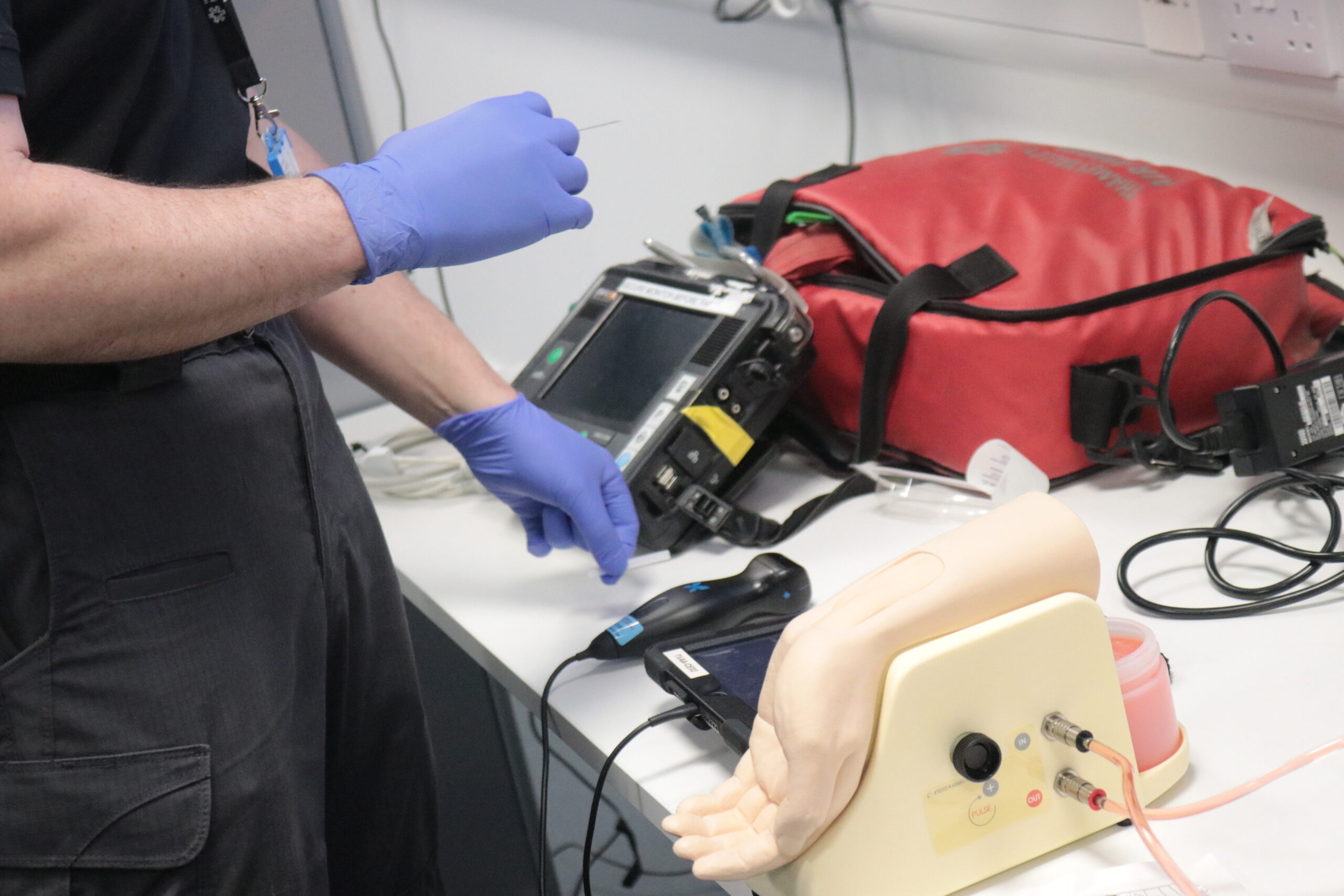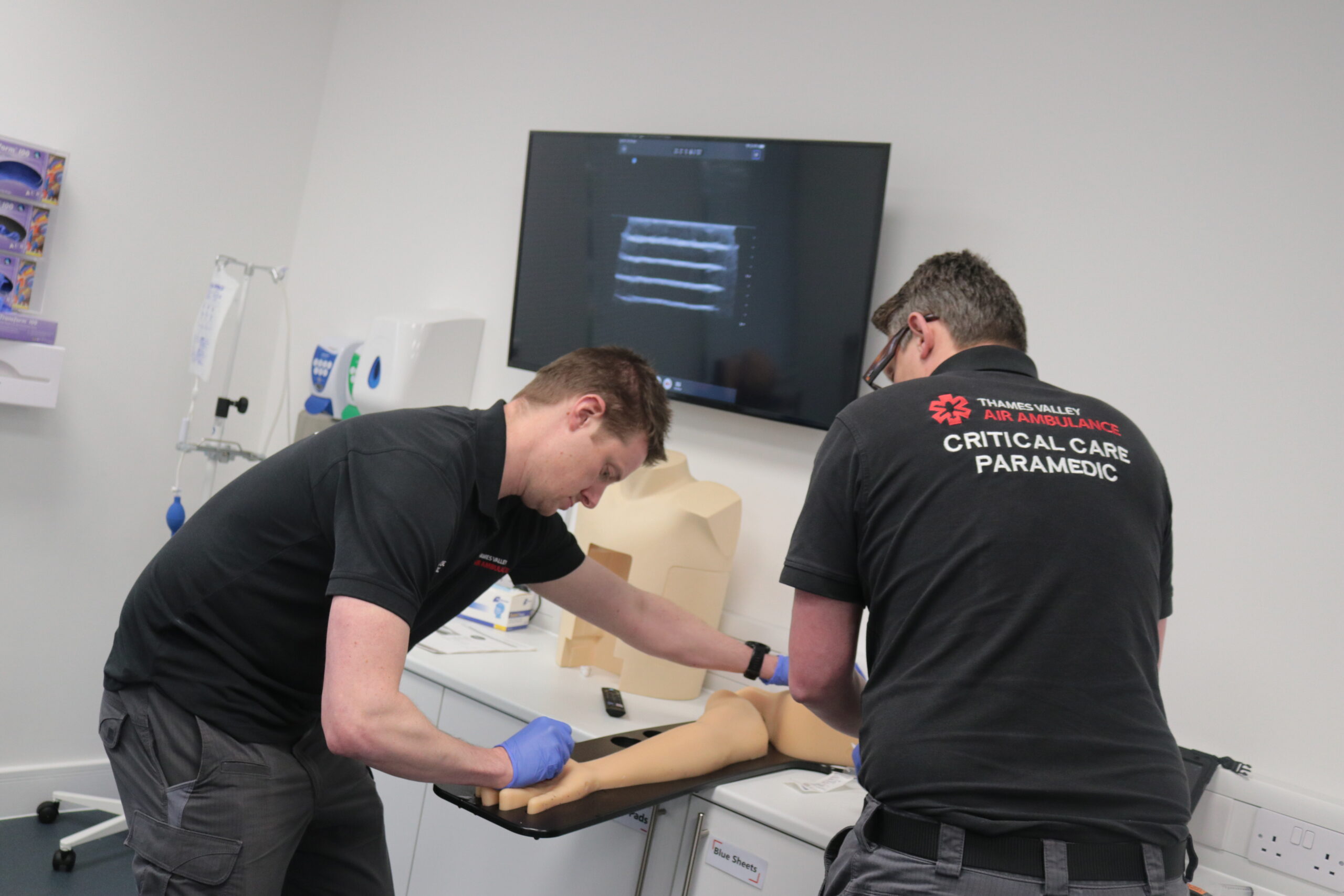
Pre-Hospital Education Centre
Doctor Asher Lewinsohn
As clinicians in pre-hospital emergency medicine, we make quick decisions in high-pressure situations. These decisions affect outcomes for a patient, their survival, and their recovery.
Decisions are made using the evidence we have in front of us. Evidence like blood pressure readings. It’s not just a number, it’s a window into what’s going on under the surface. It can tell us whether a patient’s heart and circulation are functioning well enough to maintain sufficient blood flow to key organs, like the brain. It’s one of the key metrics we use to decide which interventions would be most effective to help save a life.
But what if the tools we use to measure blood pressure aren’t giving us the full picture?
Our latest research, published in the Scandinavian Journal of Trauma, Resuscitation and Emergency Medicine, highlighted a critical issue in pre-hospital care: the inaccuracy of non-invasive blood pressure (NIBP) monitoring in critically ill and injured patients.

What we found:
In our study, we compared over 2,300 measurements from 221 patients using two methods: the common cuff-based method (NIBP) and a more precise method that involves inserting a thin tube, known as an arterial line, directly into a patient’s artery. This approach, known as invasive blood pressure (IBP) monitoring, gives us a more accurate beat-by-beat reading of the blood directly through the patient’s artery.
In our research, we discovered that NIBP devices, commonly used in pre-hospital settings, often fail to provide accurate readings. This was particularly shown in the patients who need it the most, for example, those with haemodynamic instability where the body is unable to get enough blood flow to vital organs.
For patients experiencing shock – those with a systolic blood pressure below 90 mmHg – the accuracy of NIBP dropped dramatically, with readings frequently overestimating low blood pressure and underestimating high values. In simple terms, the sicker our patients become, the less accurate the tools we rely on to monitor them become.

Why this matters:
In pre-hospital care, every second counts. Blood pressure is one of the key indicators we use to make decisions. For example, when a patient is in shock, we may need to give them medications to raise their blood pressure, or blood. Or when someone has extremely high blood pressure, we might need to act to lower it quickly. When time is of the essence, we need to know we’re basing our decision-making on the most accurate readings possible.
While cuff-based blood pressure monitors are simple and convenient, our findings suggest that paramedics and doctors should be careful when using them in emergency situations, especially when a patient’s condition is critical. If the technology and resources allow, direct arterial blood pressure monitoring (IBP) should be initiated as early as possible.
This study reminds us that, whether we’re working in an ambulance or a helicopter, we need the best tools available to monitor patients accurately, even before they arrive at the hospital.

What happens now?
To my colleagues in pre-hospital emergency medicine, thank you for all you to help care for some of the sickest patients in their hour of need. We at Thames Valley Air Ambulance, along with our colleagues across the country, constantly strive to improve, learn, and grow. The desire to go above and beyond for patients can sometimes feel like a never-ending quest to know more, do more, and care more.
Responding to new research is one of the ways we can continue to drive the very highest standards of care for our community. This study is a crucial step towards improving pre-hospital emergency medicine and – most importantly – patient outcomes. Our goal is to continue refining how we monitor and treat critically ill and injured patients outside of the hospital, and this means integrating more robust, reliable systems that can be trusted in the most challenging conditions with some of the most critically unwell patients.
After all, it’s the little details that make up the full picture.
Join the community by signing up and keep up to date with news and events.
Our website makes use of the following types of cookies:
| Cookie | Duration | Description |
|---|---|---|
| __cflb | 1 hour | The __cflb cookie allows Cloudflare to return an end user to the same customer origin for a specific period of time configured by the customer. This allows the end user to have a seamless experience (for example, this cookie is used for keeping an end user’s items in a shopping cart while they continue to navigate around the website). This cookie is a session cookie that lasts from several seconds up to 24 hours. This is a first party cookie. |
| salt_recent_events | 1 month | This cookie monitors which event pages the user has visited, in order to provide them a list of recently visited event pages. This cookie is only used to improve the user's experience of our website. This is a first party cookie. |
| salt_recent_post | 1 month | This cookie monitors which web stories the user has read, in order to provide them a list of recently read stories. This cookie is only used to improve the user's experience of our website. This is a first party cookie. |
| yt-remote-cast-installed | session | The yt-remote-cast-installed cookie is used to store the user's video player preferences using embedded YouTube video. This is a third party cookie |
| yt-remote-connected-devices | session | YouTube sets this cookie to store the user's video preferences using embedded YouTube videos. This is a third party cookie. |
| yt-remote-device-id | session | YouTube sets this cookie to store the user's video preferences using embedded YouTube videos. This is a third party cookie. |
| yt-remote-fast-check-period | session | The yt-remote-fast-check-period cookie is used by YouTube to store the user's video player preferences for embedded YouTube videos. This is a third party cookie. |
| yt-remote-session-app | session | The yt-remote-session-app cookie is used by YouTube to store user preferences and information about the interface of the embedded YouTube video player. This is a third party cookie. |
| yt-remote-session-name | session | The yt-remote-session-name cookie is used by YouTube to store the user's video player preferences using embedded YouTube video. This is a third party cookie. |
| ytidb::LAST_RESULT_ENTRY_KEY | session | The cookie ytidb::LAST_RESULT_ENTRY_KEY is used by YouTube to store the last search result entry that was clicked by the user. This information is used to improve the user experience by providing more relevant search results in the future. This is a third party cookie. |
| Cookie | Duration | Description |
|---|---|---|
| __Secure-ROLLOUT_TOKEN | 6 months | Is used by YouTube to manage the phased rollout of new features and updates. This cookie helps assign users to specific test groups for experimental features, such as changes to the user interface or video player. The __Secure- prefix indicates that the cookie is only transmitted over a secure HTTPS connection, enhancing data security. This is a third party cookie. |
| _ga | 2 years | This cookie is installed by Google Analytics. This cookie is used to calculate visitor, session, campaign data and keep track of site usage for the site's analytics report. This cookie store information anonymously and assign a randomly generated number to identify unique visitors. This is a first party cookie. |
| _ga_* | 1 year 1 month 4 days | Google Analytics sets this cookie to store and count page views. This is a first party cookie. |
| _gat_gtag_UA_* | 1 minute | Google Analytics sets this cookie to store a unique user ID. This is a first party cookie. |
| _gat_gtag_UA_77930033_1 | 1 minute | This cookie is used by Google Tag Manager to store and track website conversions. This is a first party cookie. |
| _gcl_au | 3 months | Google Tag Manager sets the cookie to experiment advertisement efficiency of websites using their services. This is a third party cookie. |
| _gid | 1 day | This cookie is installed by Google Analytics. The cookie is used to store information of how visitors use a website and helps in creating an analytics report of how the wbsite is doing. The data collected including the number visitors, the source where they have come from, and the pages viisted in an anonymous form. This is a first party cookie. |
| _hjAbsoluteSessionInProgress | 30 minutes | This cookie is used by Hotjar to detect the first pageview session of a user. This is a True/False flag set by the cookie. This is a third party cookie. |
| _hjFirstSeen | 30 minutes | This is set by Hotjar to identify a new user’s first session. It stores a true/false value, indicating whether this was the first time Hotjar saw this user. It is used by Recording filters to identify new user sessions. This is a third party cookie. |
| _hjid | 1 year | This cookie is set by Hotjar. This cookie is set when the customer first lands on a page with the Hotjar script. It is used to persist the random user ID, unique to that site on the browser. This ensures that behavior in subsequent visits to the same site will be attributed to the same user ID. This is a third party cookie. |
| _hjIncludedInPageviewSample | 30 minutes | This cookie is set to let Hotjar know whether a visitor is included in the data sampling defined by our site's pageview limit. This is a third party cookie. |
| _hjIncludedInSessionSample | 2 minutes | This cookie is set to let Hotjar know whether a visitor is included in the data sampling defined by the website's daily session limit. This is a third party cookie. |
| _hjSession_* | 1 hour | Hotjar sets this cookie to ensure data from subsequent visits to the same site is attributed to the same user ID, which persists in the Hotjar User ID, which is unique to that site. This is a first party cookie. |
| _hjSessionUser_* | 1 year | Hotjar sets this cookie to ensure data from subsequent visits to the same site is attributed to the same user ID, which persists in the Hotjar User ID, which is unique to that site. This is a first party cookie. |
| _hjTLDTest | session | This cookie is set by HotJar. When the Hotjar script executes they try to determine the most generic cookie path to use, instead of the page hostname. This is done so that cookies can be shared across subdomains (where applicable). To determine this, HotJar try to store the _hjTLDTest cookie for different URL substring alternatives until it fails. After this check, the cookie is removed. This is a third party cookie. |
| _uetsid | session | Bing Ads sets this cookie to engage with a user that has previously visited the website. This is a third party cookie. |
| _uetvid | session | Bing Ads sets this cookie to engage with a user that has previously visited the website. This is a third party cookie. |
| VISITOR_INFO1_LIVE | 5 months 27 days | This cookie is set by Youtube. Used to track the information of the embedded YouTube videos on a website. This is a third party cookie. |
| vuid | 1 year 1 month 4 days | Vimeo installs this cookie to collect tracking information by setting a unique ID to embed videos on the website. This is a third party cookie. |
| YSC | session | This cookie is set by Youtube and is used to track the views of embedded videos. This is a third party cookie. |
| Cookie | Duration | Description |
|---|---|---|
| _fbp | 3 months | This cookie is set by Facebook to deliver advertisement when they are on Facebook or a digital platform powered by Facebook advertising after visiting this website. This is a first party cookie. |
| fr | 3 months | The cookie is set by Facebook to show relevant advertisments to the users and measure and improve the advertisements. The cookie also tracks the behavior of the user across the web on sites that have Facebook pixel or Facebook social plugin. This is a third party cookie. |
| IDE | 1 year 24 days | Used by Google DoubleClick and stores information about how the user uses the website and any other advertisement before visiting the website. This is used to present users with ads that are relevant to them according to the user profile. This is a third party cookie. |
| NID | 6 months | Google sets the cookie for advertising purposes; to limit the number of times the user sees an ad, to unwanted mute ads, and to measure the effectiveness of ads. This is a first party cookie. |
| test_cookie | 15 minutes | This cookie is set by doubleclick.net. The purpose of the cookie is to determine if the user's browser supports cookies. This is a third party cookie. |
| VISITOR_PRIVACY_METADATA | 6 months | YouTube sets this cookie to store the user's cookie consent state for the current domain. This is a third party cookie. |
| yt.innertube::nextId | session | YouTube sets this cookie to register a unique ID to store data on what videos from YouTube the user has seen. This is a third party cookie. |
| yt.innertube::requests | session | YouTube sets this cookie to register a unique ID to store data on what videos from YouTube the user has seen. This is a third party cookie. |